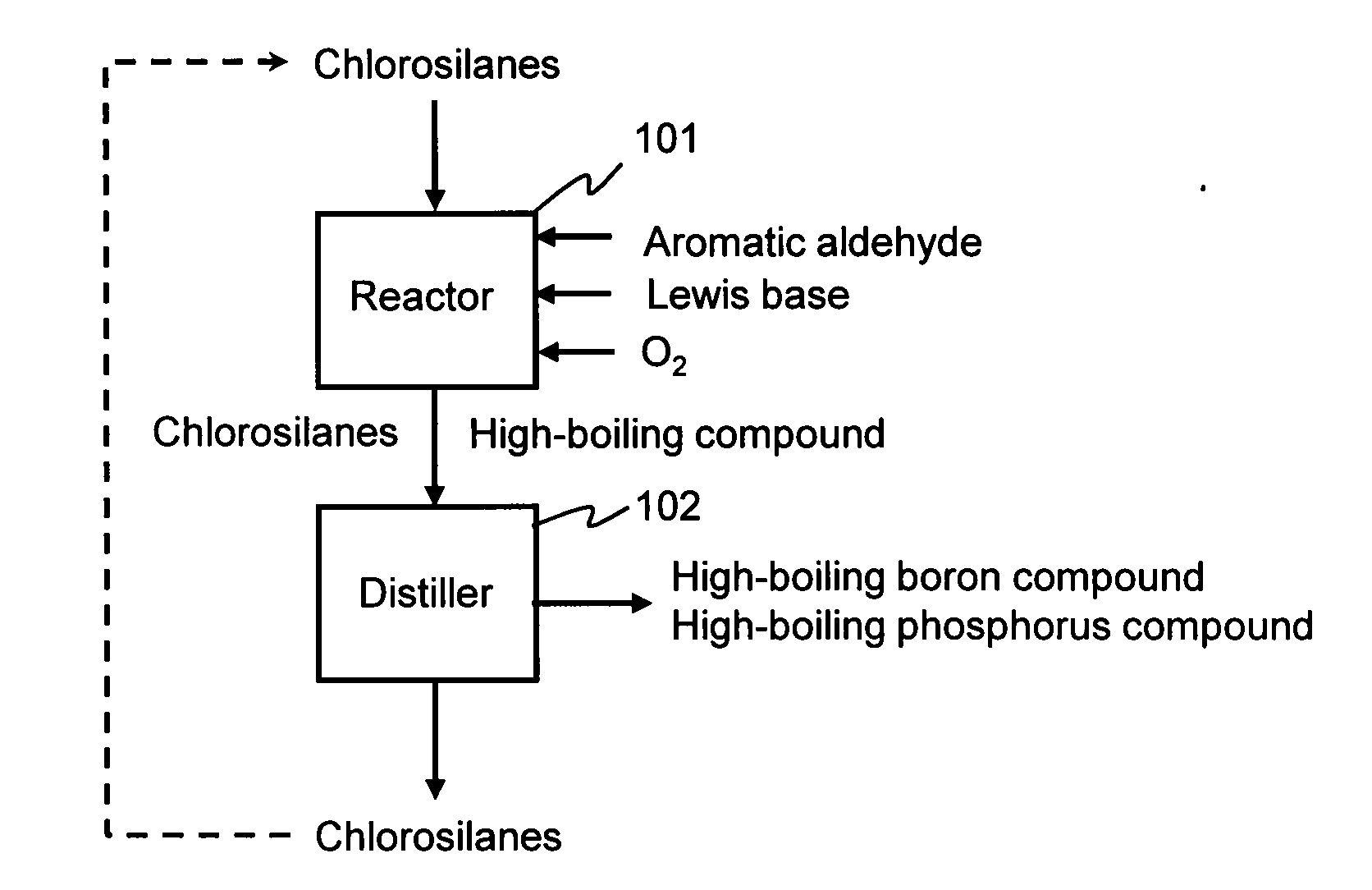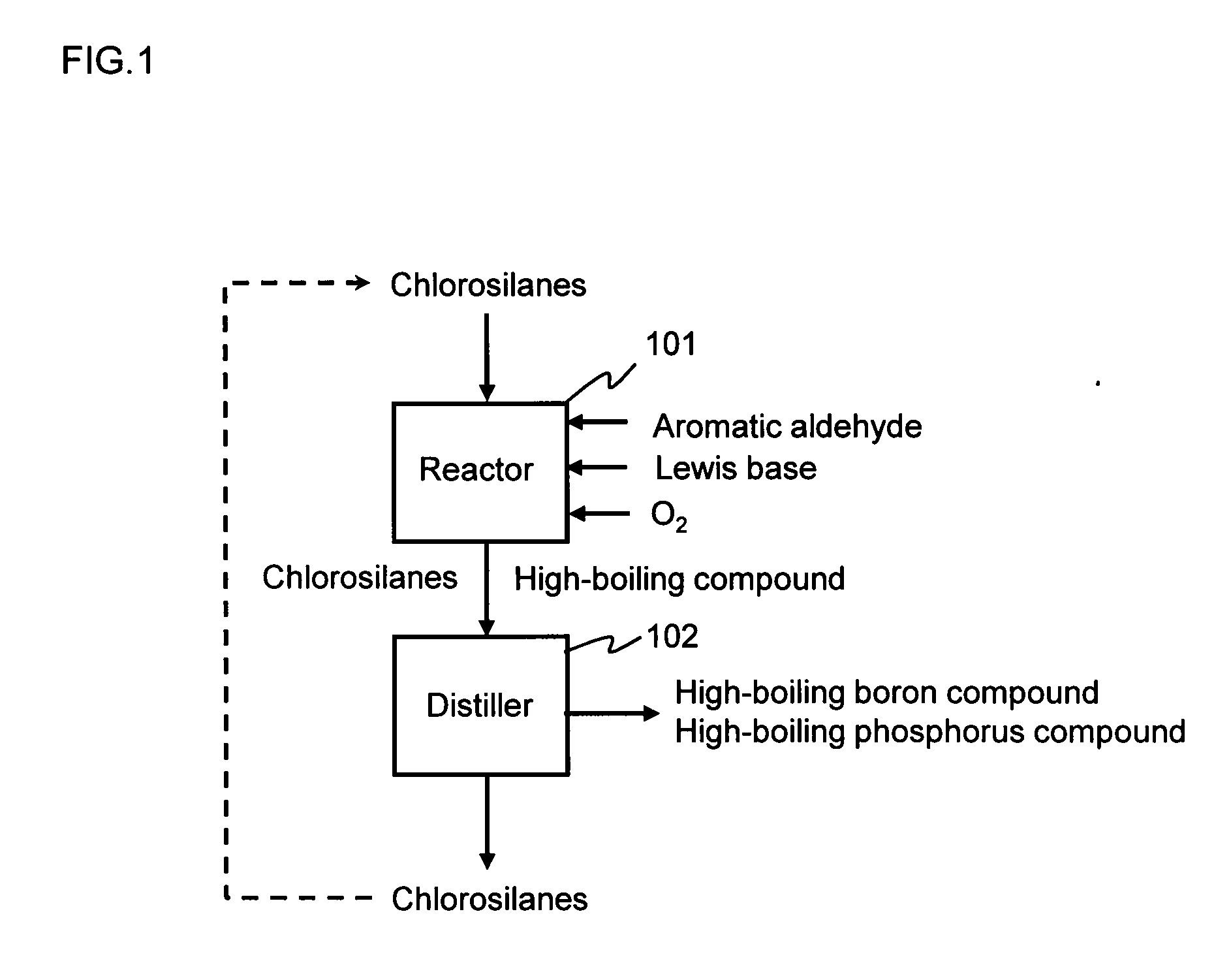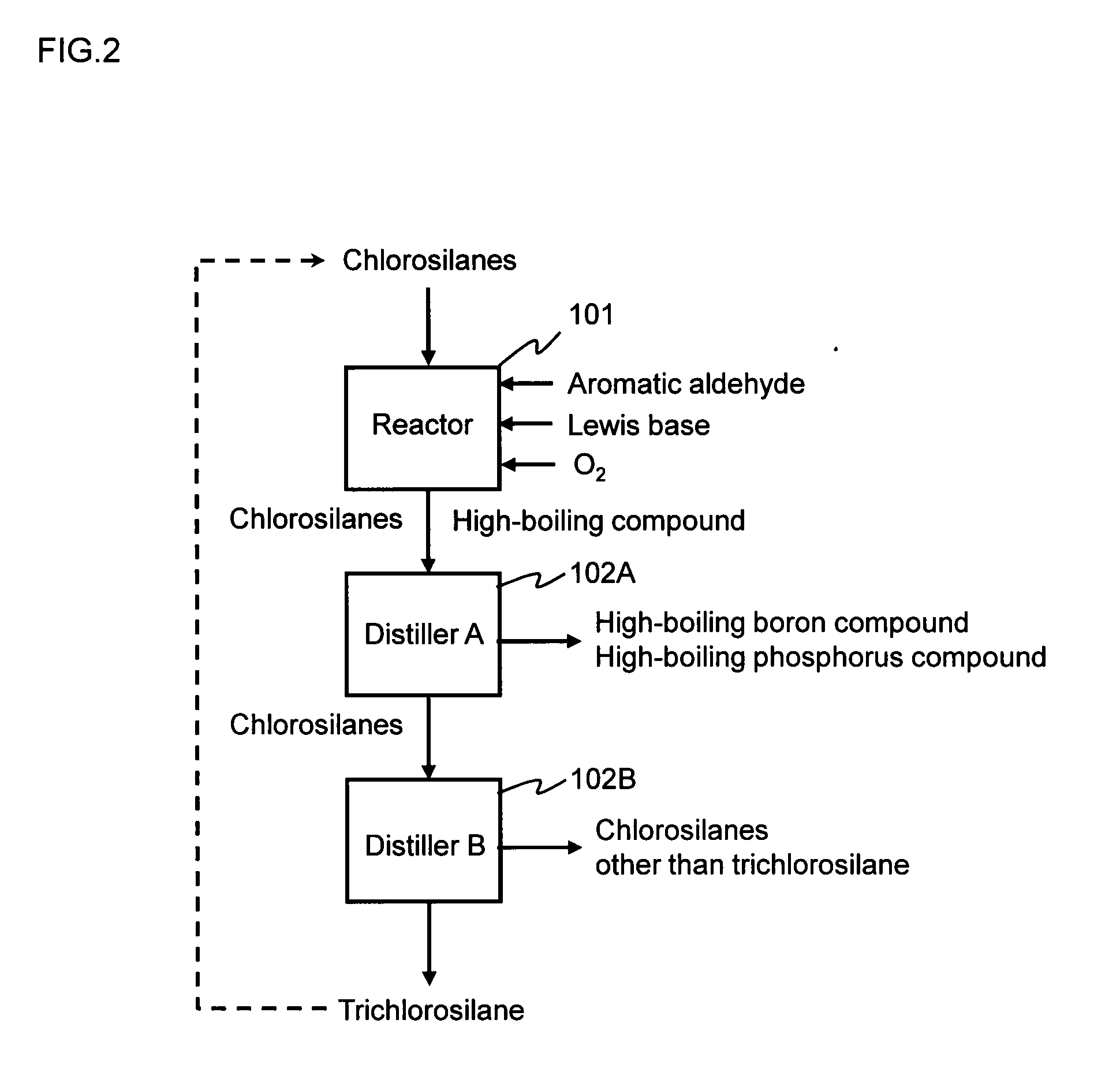Method for purifying chlorosilanes
a chlorosilane and chlorosilane technology, applied in the field of chlorosilane purification, can solve the problems of difficult separation and removal, significant affecting the electrical properties (resistivity) of polycrystalline silicon, and residual impurities, etc., and achieve the effect of simplifying the operation control of the purification system
- Summary
- Abstract
- Description
- Claims
- Application Information
AI Technical Summary
Benefits of technology
Problems solved by technology
Method used
Image
Examples
example 1
[0075]For the purpose of masking the iron which is involved in a reaction to form by-product solids, a sulfur-containing compound was added to verify the effect as an inhibitor of solid by-product formation.
[0076]Specifically, to HSiCl3 (20 g) were added 1 g of PhCHO, PhCH2Cl, or PhCHCl2 and 2 g of SPh2, CH3SPh, or CH3COSPh, and thereto was further added 0.01 g of FeCl3 as a catalyst substance. These samples were put in an airtight container and allowed to stand for one week at ordinary temperature to examine the state of the solid by-product formation. The results are shown in Table 1.
TABLE 1SPh2CH3SPhCH3COSPhPhCHO◯XX◯XX◯XXPhCH2ClX◯XX◯XX◯XPhCHCl2XX◯XX◯XX◯FeCl3◯◯◯◯◯◯◯◯◯By-YesNoNoNoNoNoNoNoNoproductionof solids◯: AddedX: Not added
[0077]From the results shown in Table 1, the solid by-product formation was not observed in samples other than the sample to which PhCHO and SPh2 were added, among the above nine samples. These results show that Friedel-Crafts polymerization in which PhCH2Cl...
example 2
[0080]For the purpose of suppressing the reaction to form by-product solids by siloxane polymerization, an alkoxysilane was added to verify the effect as an inhibitor of solid by-product formation.
[0081]Specifically, to HSiCl3 (20 g) were added 1 g of PhCHO, PhCH2Cl, or PhCHCl2 and 2 g of CH3Si(OCH3)3 or (CH3)2Si(OCH3)2, and thereto was further added 0.01 g of FeCl3 as a catalyst substance. These samples were put in an airtight container and allowed to stand for one week at ordinary temperature to examine the state of the solid by-product formation. The results are shown in Table 3.
TABLE 3CH3Si(OCH3)3(CH3)2Si(OCH3)2PhCHO◯XX◯XXPhCH2ClX◯XX◯XPhCHCl2XX◯XX◯FeCl3◯◯◯◯◯◯By-NoYesYesNoYesYesproductionof solids◯: AddedX: Not added
[0082]From this experiment, it was found that alkoxysilanes had an effect of suppressing siloxane polymerization and that alkoxysilanes did not have an effect to prevent the by-product formation of a benzylidene polymer, which a sulfur-containing compound has.
example 3
[0085]An experiment to verify the effect of a combined use of a sulfur-containing compound and an alkoxysilane was performed.
[0086]Specifically, to HSiCl3 (20 g) were added 1 g of PhCHO, PhCH2Cl, or PhCHCl2, 2 g of CH3SPh as a sulfur-containing compound, and 2 g of CH3Si(OCH3)3 as an alkoxysilane, and thereto was further added 0.01 g of FeCl3 as a catalyst substance. These samples were put in an airtight container and allowed to stand for one week at ordinary temperature to examine the state of the solid by-product formation. The results are shown in Table 5.
TABLE 5Added CH3SPh and CH3Si(OCH3)3PhCHO◯XXPhCH2ClX◯XPhCHCl2XX◯FeCl3◯◯◯By-NoNoNoproductionof solids◯: AddedX: Not added
[0087]No solid by-product formation was observed in any of the samples, and it was possible to verify that the reaction to form by-product solids can be suppressed by the synergy of each suppressing effect.
PUM
| Property | Measurement | Unit |
|---|---|---|
| purity | aaaaa | aaaaa |
| electrical properties | aaaaa | aaaaa |
| resistivity | aaaaa | aaaaa |
Abstract
Description
Claims
Application Information
 Login to View More
Login to View More - R&D
- Intellectual Property
- Life Sciences
- Materials
- Tech Scout
- Unparalleled Data Quality
- Higher Quality Content
- 60% Fewer Hallucinations
Browse by: Latest US Patents, China's latest patents, Technical Efficacy Thesaurus, Application Domain, Technology Topic, Popular Technical Reports.
© 2025 PatSnap. All rights reserved.Legal|Privacy policy|Modern Slavery Act Transparency Statement|Sitemap|About US| Contact US: help@patsnap.com



